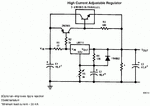SAMYA
Newbie level 4
I want to fetch more current from this configuration that's why i want to increase the no of power transistors in parallel.My question is if i add more power transistors in parallel,then what will be the value of R2 & R3 and what is the formula to calculate them.Also what is the proper value of star marked resistor.Right now i'm using 2n3906 instead of 2n3905 and TIP35 as the power transistor and 1.5k as the star marked resistor.This is my first post here,so please regret any mistakes....

